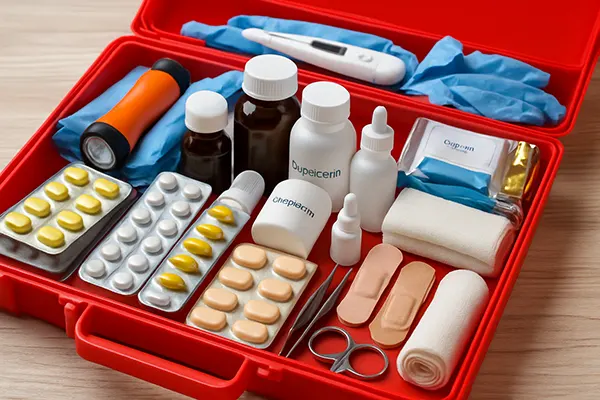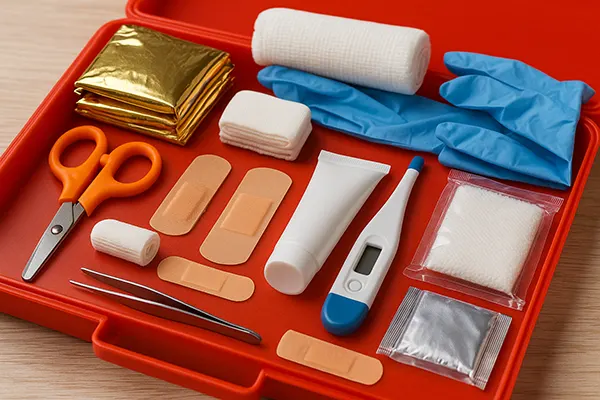
How to Organise a Home First Aid Kit: Everyday and Emergency Tips for Housewives
Maintaining a well-stocked and organised home first aid kit is a vital responsibility for any household, especially for those managing a family or dealing with daily domestic tasks. A properly arranged kit not only ensures quick response during minor injuries but also prepares you for unexpected emergencies. As of February 2025, this guide reflects the most up-to-date recommendations on how to set up and manage a home first aid kit in a practical, effective manner.
Essential Components of a Home First Aid Kit
Start with the basics: adhesive bandages in various sizes, antiseptic wipes, sterile gauze pads, adhesive tape, and scissors. These are indispensable for treating everyday cuts, scrapes, or blisters. A digital thermometer is also crucial for quickly checking body temperature during a suspected fever or illness.
Include disposable gloves, a face mask, tweezers, and a small flashlight with extra batteries. These tools may seem secondary, but they become critical during more complicated first aid procedures or power outages. Don’t forget an emergency blanket, which can help retain body heat in case of shock or extreme cold.
Finally, every kit should contain a list of emergency contacts and personal medical information for each family member. Details such as allergies, regular medications, and chronic conditions can significantly aid healthcare responders if they need to intervene.
Medications and Topical Treatments
Basic medications are a must. Paracetamol and ibuprofen help manage fever and pain, while antihistamines can quickly treat allergic reactions. Include antacids for indigestion, anti-diarrhoeal tablets, and rehydration salts to address gastrointestinal issues. Keep these drugs in their original packaging with dosage information clearly visible.
Topical treatments should include antiseptic cream or ointment, burn cream, and hydrocortisone cream for rashes or insect bites. Additionally, having a saline eye wash can help flush out irritants safely. Ensure the expiry dates are routinely checked to maintain the effectiveness of these products.
If family members have prescribed medications such as inhalers or epinephrine auto-injectors, store spares in the kit. However, remember to monitor their storage conditions, especially for temperature sensitivity, and replace them regularly to keep them within their shelf life.
Strategic Storage and Organisation Tips
The location of your first aid kit can make all the difference in an emergency. Choose a spot that is accessible but out of reach of small children, such as a locked cabinet in the kitchen or bathroom. Avoid placing it in areas with excessive heat or humidity, which could degrade the quality of supplies.
Use a labelled, durable container with internal compartments to separate items by category—medications, tools, wound care, etc. This layout makes it easier to find what you need quickly. Consider using waterproof containers to protect contents from leaks or spills.
Organise kits for different purposes. A primary home kit should remain stationary, but smaller portable kits can be prepared for the car, baby bag, or suitcase for travel. This ensures you’re covered wherever you go, especially during holidays or family outings.
Maintenance and Regular Checks
It’s recommended to inspect your first aid kit every three to six months. Remove expired medications and restock any depleted items. A printed checklist taped to the inside of the container lid can help track contents and monitor what needs replacing.
Education is as important as the tools themselves. All household members, especially teens and caregivers, should know where the kit is and how to use each item. Consider attending a basic first aid training course to boost your confidence and skills in emergency response.
Incorporate this maintenance into seasonal cleaning routines or family health check-ups. This habit ensures readiness at all times and reduces the risk of finding unusable supplies during a crisis. Keeping the kit updated is a simple yet essential form of preparedness.

Preparing for Emergencies and Natural Disasters
In addition to daily needs, tailor your first aid kit for potential emergencies such as power outages, storms, or earthquakes. Add extra supplies like a battery-powered radio, multi-day supply of essential medications, and water purification tablets. These additions can bridge critical gaps when services are disrupted.
Stock up on larger quantities of bandages, antiseptics, and pain relief, anticipating scenarios where immediate restocking might be impossible. Include a whistle, emergency contact numbers, and a map of local medical facilities. Keep a flashlight and spare mobile phone charger inside the kit for communication support.
Families with infants, elderly members, or people with disabilities should include extra specialised supplies—such as infant fever reducers, mobility aids, or hearing aid batteries. This personalised approach improves resilience and helps everyone manage high-stress scenarios more confidently.
Customising Your First Aid Kit for the Household
No two households are alike, and your first aid kit should reflect that. Active families may benefit from more sports injury supplies such as cold packs, elastic bandages, or finger splints. Those living in rural areas may need more extensive emergency equipment due to longer response times.
Pets are often overlooked. Include basic supplies for treating animal injuries—like pet-safe antiseptics, tick removers, and a soft muzzle. Keeping veterinary emergency contact numbers can be equally important in a stressful moment.
Review lifestyle changes regularly. New diagnoses, changes in medication, or a growing family all require timely updates to the kit. Think of it as a living system that adapts to your family’s health profile. A tailored and up-to-date first aid kit saves precious time and can significantly improve outcomes in a crisis.
